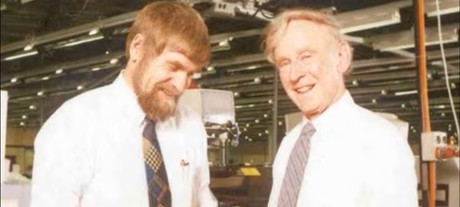Backhaul: the industry 25 and 10 years ago (September 2017)

Backhaul takes you on a trip down memory lane as we look at what was happening in the comms sector of yesteryear.
25 YEARS AGO. The cover of the October/November 1992 issue of What’s New in Radio Communications featured Exicom’s Midland range of intrinsically safe portable VHF and UHF transceivers, designed to operate in the 148–174 and 450–520 MHz ranges. With a current limiter that folded back at 1.2 A, and a filling of Polyol AU20 expanding foam, the units were considered state-of-the-art intrinsically safe radios. Elsewhere in this issue we reported that Radio Frequency Systems had won antenna export contracts for Indonesia and Mexico worth $0.5m; Codan had been awarded the AS3902 (IS 9002) quality standard; and OTC had launched a WeatherFax service that broadcast weather information to ships at sea via VHF. In a feature article, Peter Hilly (Spectrum Engineering) gave us an overview of frequency planning and the role of the then regulator; Graham Hicks (Rohde & Schwarz) updated us on something new called GSM; and Barry Dropping (Hewlett-Packard) explained the use of modulation-domain analysers.
10 YEARS AGO. The cover of the September/October 2007 issue of Radio Comms Asia-Pacific featured the Pacific Wireless RDX3588, a weatherproof, lightweight, self-contained P25 digital suitcase repeater that provided more than 24 hours of internally powered, code-transparent tactical operation at a 20% duty cycle. Inside the magazine, we reported on the upcoming 2007 Radio Comms Connect show (now simply Comms Connect), which was to be a one-day seminar for technicians and dealers! We also reported on ComGroup winning a contract to the supply the PNG Police Constabulary with a new P25 radio systems, John Florenca (Omnitronics) opined on the coming rise of VoIP and its application for unified communications, and Andrew McDonald of IPS Radio and Space Services gave us an overview of the effects of ‘space weather’ on radio systems. We also reported on the passing of Sir Angus Tait, founder of Tait Electronics, who had died at the age of 88.
$6.1m in govt funding to improve NSW rural connectivity
The funding will improve connectivity to around 1500 premises across the central west and...
Govt funds comms for Navy, Wi-Fi for evacuation centres
The government is upgrading communication systems on Royal Australian Navy ships, and also...
Call to standardise physical security of comms infrastructure
A new white paper from TCCA seeks to catalyse the creation of a global standard for the physical...





